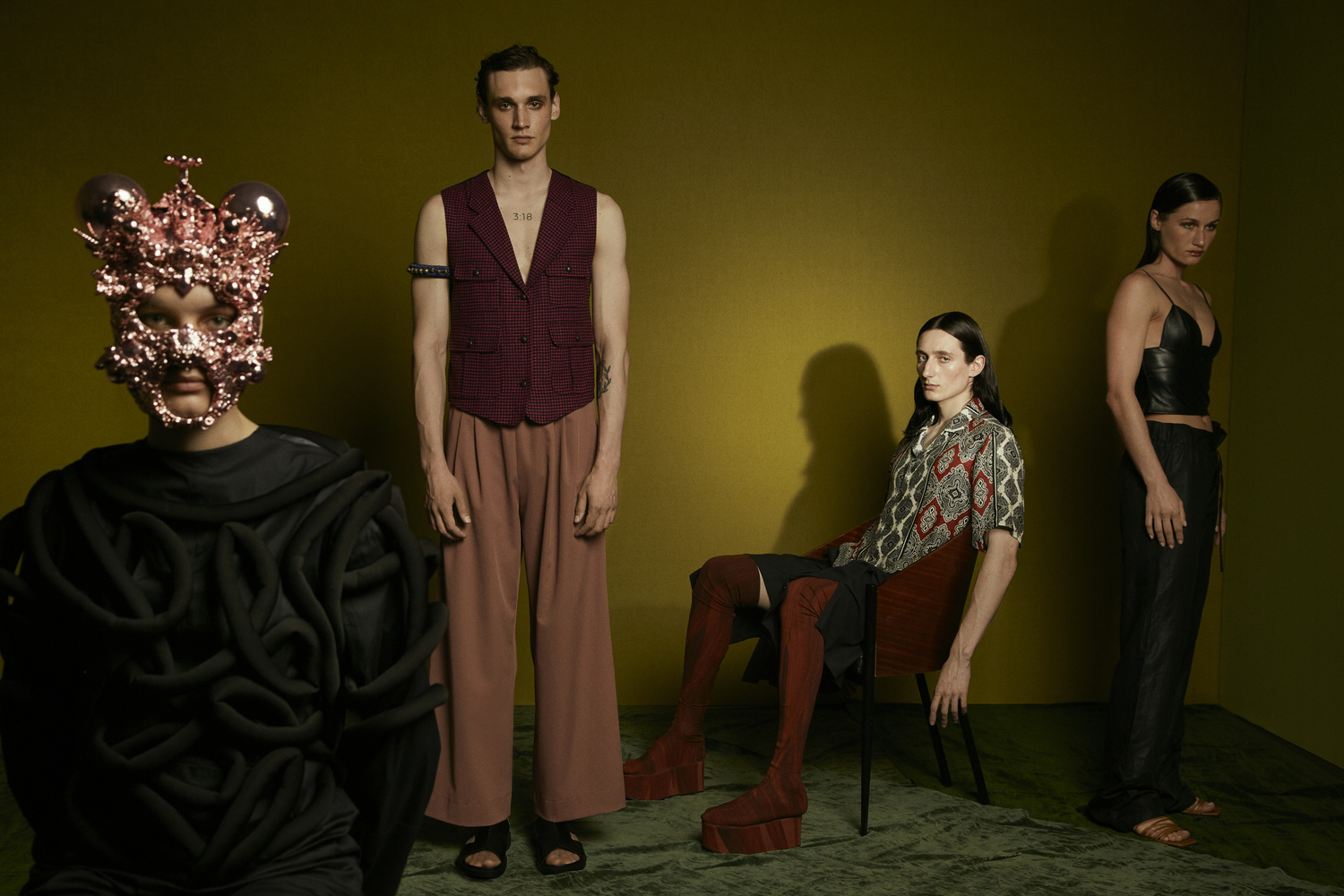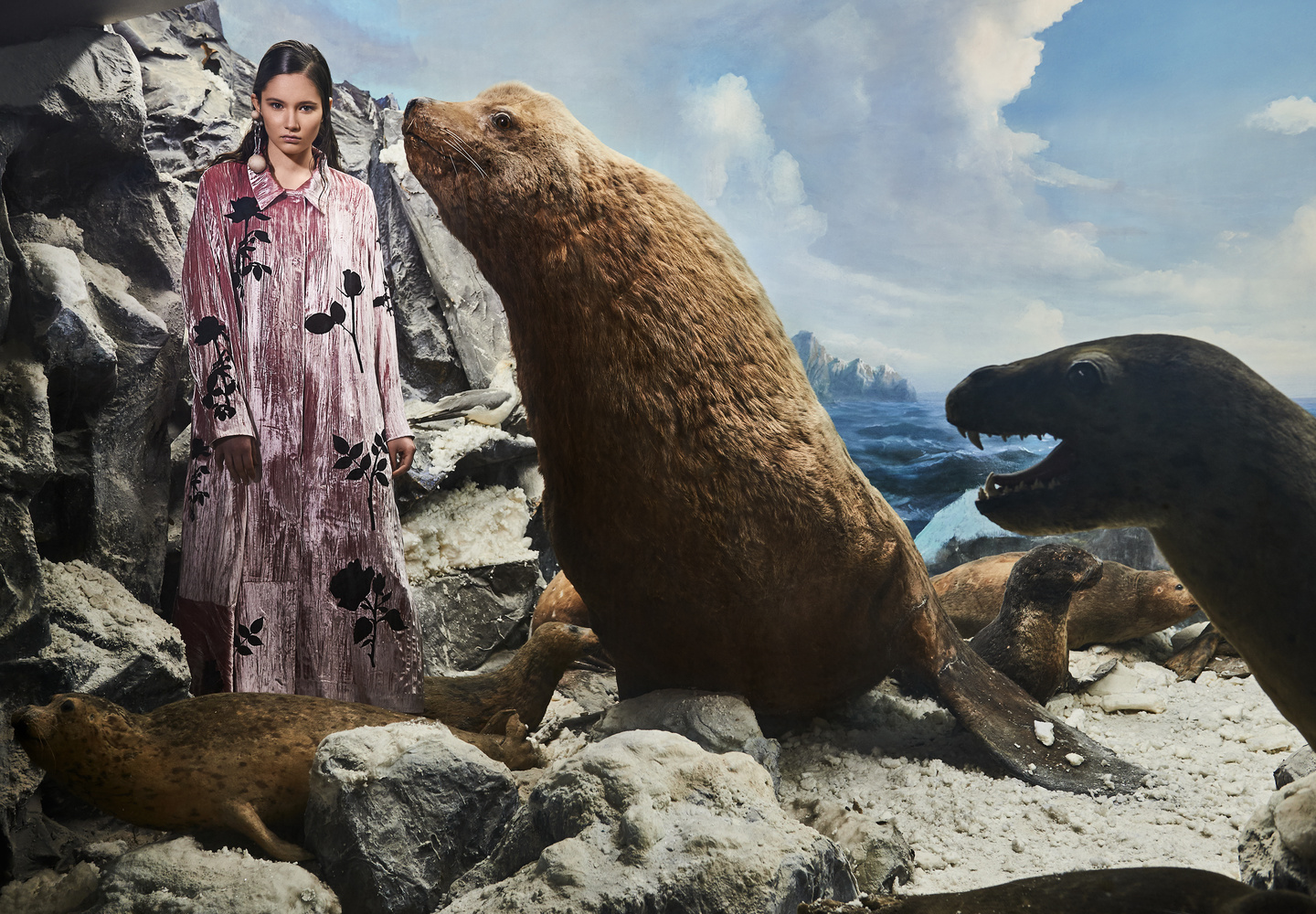Zahar is a high-end retoucher who has worked with Vogue, Elle, Bazaar, and other magazines. His commercial clients include some of the biggest names in the industry, such as Dior.
Photographer Turned Retoucher
Zahar's own journey started off in photography. He started at high school and found it to be a rather magical thing. Capturing his family and friends, he progressed in his career. Many post-production artists start their journey this way, as post-production is an art few are aware of. Zahar was unaware of post-production at that point.

He was lucky to join a photography company — not as a photographer but as a writer. He didn’t have a camera, so writing was pretty much all he could do while staying in the industry. He wrote different advertising texts and managed social media. Zahar recalls these days as a time when he managed to meet new people and grow his network of creatives. It is crucial for every photographer to have a strong friend and acquaintance circle, as those are the people who will help you out in your journey.

Desiring a career change, Zahar quit his job on good terms but was depressed for several months. At some point, he opened up Photoshop and tried a simple technique: dodge and burn. Zahar shared his work on social media and got an overwhelmingly positive response. Photographers liked his art, and he got the boost that took him to the next step: high-end retouching.

Few post-production artists start off wanting to be in that role. Photography is a concept that is larger than life; there are infinite ways to make money within photography. From Zahar’s example, I would encourage photographers to always keep exploring their art, industry, and most importantly, themselves. Zahar found his passion simply because he had an open mind.
Hard Work and Consistency = Elle Jobs
One of the biggest jobs Zahar had was for Elle magazine, not by scale or pay, but by significance. It was indeed his first Elle international project. Getting there is quite simple, he says: hard work and consistency.
 Having worked with Zahar as well as other post-production artists, I can relate to that. As a photographer, I need to have consistent results for my editorial and commercial work. Professionalism is indeed about being able to produce the same exceptional level of work every time without exception. Consistency and exploration result in defining a style that is recognizable and fun for you. Yet, consistency isn’t about the brush you use or the way you remove dust on backgrounds. It’s about your philosophy as an artist. It is also about what you consider to be beautiful.
Having worked with Zahar as well as other post-production artists, I can relate to that. As a photographer, I need to have consistent results for my editorial and commercial work. Professionalism is indeed about being able to produce the same exceptional level of work every time without exception. Consistency and exploration result in defining a style that is recognizable and fun for you. Yet, consistency isn’t about the brush you use or the way you remove dust on backgrounds. It’s about your philosophy as an artist. It is also about what you consider to be beautiful.
Post-Production Is Therapeutic
Zahar tried himself in a variety of areas: photography, art direction, styling, makeup, and even modeling. He quickly found that post-production was the most fun for him and chose it to be his ultimate career path. For him, it allows collaborating with creatives worldwide while also having time for his individual creativity. Indeed, as a post-production artist, he can work with any photographer in the world. Nonetheless, the process itself is largely controlled by him. Although when starting, out he would do exactly as photographers told him, he moved on to putting his own @justlike_magic touch.
Ultimately, he loves retouching because of how calm and therapeutic it is.

Good Retouching Takes Your Ideas to the Next Level
In a different article, I wrote about the importance of retouching. Yet, there was some negative feedback on it, mostly from photographers who didn't understand the value it brings to them. While that depends on who is working on your images, a good post-production artist can enhance your images beyond what's imaginable. Having worked with Zahar for a while now, I am still blown every time I download the files. They are far beyond what I could think of and quite frankly, much better. At his level of professionalism, he is able to read the image like a book and know exactly what it needs.
Zahar believes that post-production artists can help make photographs, visions, and ideas real.

Learning Retouching: From Real Pros Who Know Aesthetic
Perhaps some of you are interested in learning to retouch. There are plenty of courses online that may offer some solutions and tips. However, it is vital to know that what you’re learning is relevant. When starting out, Zahar managed to connect to fellow artists and learn from them. Moreover, he used Deviant Art to find inspiration. It is crucial to learn from working professionals in the industry. In fact, it is best to find someone doing what you want to be doing and learn from them. While there are large retouching academies, I personally found that they have little to do with what is the industry standard. Sure, the techniques are advanced and the end result is different. But retouching is far more than just cleaning the skin and changing shape. It’s about the aesthetic. The same exact raw file would look very different in Elle and Glamour. Vogue is in a league of its own.
What You and I Can Learn From Zahar
I learned a great deal from Zahar, not only about post-production but also about aesthetics. He confesses that he is still a learner, as any humble professional should be. What he does know and pay attention to is aesthetic. His free Instagram masterclass is not only about technique but also about aesthetics. In my photographer's opinion, aesthetics is the next step. The best analogy I can give is learning light and then using that light to create different moods. As with everything in the professional world, just knowing a technique won't get you beyond your local camera club.
https://www.youtube.com/watch?v=jrr4q9dDRrY
Don’t Hustle, Have Fun With It

To anyone who is inspired to try retouching or perhaps take their work to a new level, Zahar would suggest to be mindful of yourself and take it one step at a time. From his own experience, health is the most important thing. Overworking is the opposite of creativity and can lead to dark places. Oh, and meeting deadlines doesn’t hurt, but that’s true for all creatives.
Images used with permission of Zahar.







With all due respect to the really good retouching, but this, "Zahar tried himself in a variety of areas: photography, art direction, styling, makeup, and even modeling." almost made me stop reading your article any further. A real multi talent he is, isn't he? After reading 20 times that name in this short text, I had enough. I like your style Illya, but this here is an exception.
I can appreciate the level of editing but I come from a different perspective, I started my career in the early ‘90’s when I saw images from Peter Lindbergh, Arther Elgort, Sante D’Orazo and Patrick Demarchalier to name a few. The images could be slick highly produced but were mainly minimal hair and makeup and I thought represented true beauty. I thought that Gilles Bensimon’s images for Elle were the most highly produced during that period, his all white lighting technique inspired my studio work a great deal but Peter’s book, Ten Beautiful Women set the standard for me. As written earlier, less hair and makeup then get it right in camera and I’m happy.